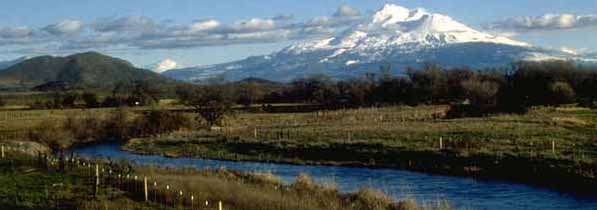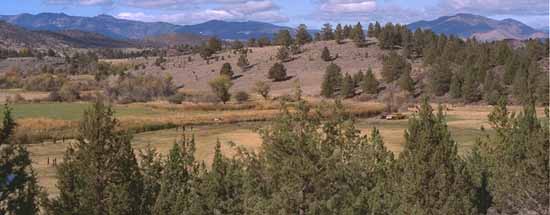 |
 |
Bibliography | Home |
Cascade and Klamath Mountains
![]()
| The Shasta Valley is bordered on the east side by the Cascade Range, a broad northwest-trending series of giant volcanoes ranging in age from Pliocene to Recent.. The older mountains are deeply eroded, while the younger ones still have the classic volcanic cone shape. Mount Shasta is by far the most prominent feature in the area. A massive volcano, it erupted over the last million years, building a 14,162 foot mountain composed largely of andesite. |
 Mt. Shasta is part of the Cascade Range. |
| Basaltic
flows from the Cascades overlap the Klamath Mountain rocks along the valley
floor. In these places, the river is flowing across rock formations from
two different geologic provinces.
The Klamath Mountains to the west are composed of materials from a number of geologic formations, including rocks that once made up the ocean floor. Some of the oldest rocks in California are found here. Black igneous rocks and fine-grained black basalt, deposited 475 million years ago beneath the ocean's surface, and were covered over by a period of many years by ocean sediments. Plate tectonics pushed this layered formation upward, making the Klamath province mountains. The rocks are crumpled and fractured, and often metamorphosed from the extreme pressure. |
 |
| Here, the Shasta River flows through the hillocks deposited created by an ancient debris torrent (see geology introduction). The Klamath Mountains are in the background. |
![]()
| www.krisweb.com |